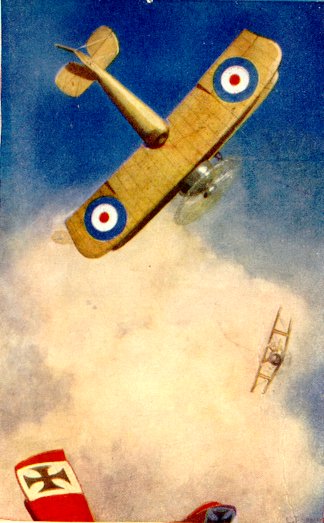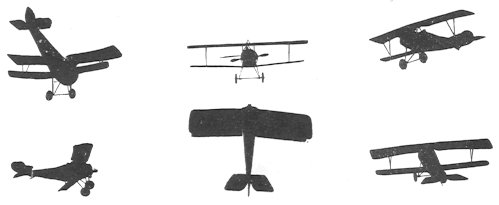Nieuport 17
Today, a case history of technological change. The University of Houston's College of Engineering presents this series about the machines that make our civilization run, and the people whose ingenuity created them.
My father told me that the Nieuport 17 was the apple of his eye. He flew all kinds of planes during the last year of WW-I -- Curtiss Jennies, Sopwith Camels, SPADs. Good thing he didn't get into combat; those pretty Nieuports had long since been outclassed by the Red Baron's Fokker Triplane and the Fokker D-VII.
The story of WW-I fighters says a lot about the rhythm of technological change. The struggle for air superiority over the trenches hardly differed from today's struggle among competing information systems. It had a similar speed and intensity. It reflected the same alternation between complacency and desperation.
Early in the war, Fokker emerged from a gaggle of competitors with his single-winged Eindecker. It flew just over eighty miles an hour, and it could do some pretty fancy aerobatics. Then, in 1915, Fokker figured out how to mount a machine gun in front of the pilot, firing between the propeller blades.
France answered with a biplane, the Nieuport 10. It performed well, but the machine gun, mounted on the upper wing, had to fire over the propeller. It was hard to aim. And just imagine the flier's having to stand in his cockpit when it jammed and needed fixing. By early 1915, many early Nieuports had been equipped with synchronized machine guns. The Nieuport 17 appeared a year later, and, for a while, it seemed to have leveled the playing field. But Fokker wasn't done yet. Now he built an airplane with not one wing, but three.
In fact, he was copying an earlier Sopwith triplane. The reason for extra wings wasn't to add lift but to gain the structural solidity of wings braced against one another. Fokker's triplane had much shorter wings than either the old Eindecker or even the early Nieuports. By 1917 it was doing such damage to the Allies that the French, in desperation, tried to build a three-winged version of the Nieuport 17. But it took the arrival of another biplane, the highly maneuverable Sopwith Camel, to level the playing field once more.
Three formidable entrants appeared in the last months of the war: the Fokker D-VII, the Nieuport 28, and the SPAD. Now the formula was worked out, and all three were similar -- 120-mile-an-hour biplanes, with wingspans a little under thirty feet.
It'd taken four years of tinkering and thousands of deaths to settle on that design. The path was littered with far more added and removed parts than any airplane buff can list. Every field mechanic became part airplane designer. But the early design that may've come closest to the final form was that neat Nieuport 17, the airplane my father never had to ride into combat. Like the last WW-I airplanes, it had two equal wings and clean, simple lines.
Any design ferment is like that. Watch as your computers, telephones, and TVs form, diverge, and evolve. The last one standing is alsways a variant on one of the many mutations that appeared early in the game. Too bad we can never know which one it will be.
I'm John Lienhard, at the University of Houston, where we're interested in the way inventive minds work.
(Theme music)
Treadwell, T. C., and Wood, A. C., The First Air War: A Pictorial History 1914-1919. New York: Barnes & Noble Books, 1996.
Sharpe, M., Biplanes, Triplanes, and Seaplanes. New York: Barnes & Noble Books, 2000.
Brannon, D., (with Don Greer, Joe Sewell, and Randle Toepfer). Fokker Eindecker in Action. (Aircraft Number 158) Carrollton, TX: Squadron/Signal Pubs., Inc., 1996.
Cooksley, P., (with Don Greer and Ernesto Cumpian). Nieuport Fighters in Action. (Aircraft Number 167) Carrollton, TX: Squadron/Signal Pubs., Inc., 1997.
See this Wikipedia page on the Nieuport 17.

Postcard from Lt. J. H. Lienhard to his mother, 1918.
The airplane with the English markings is an imperfect
artist's conception of what is most likely a Nieuport 17.

A Nieuport whose exact model is not identified
From Notes on Identification of Aeroplanes, Signal Corps, 1917